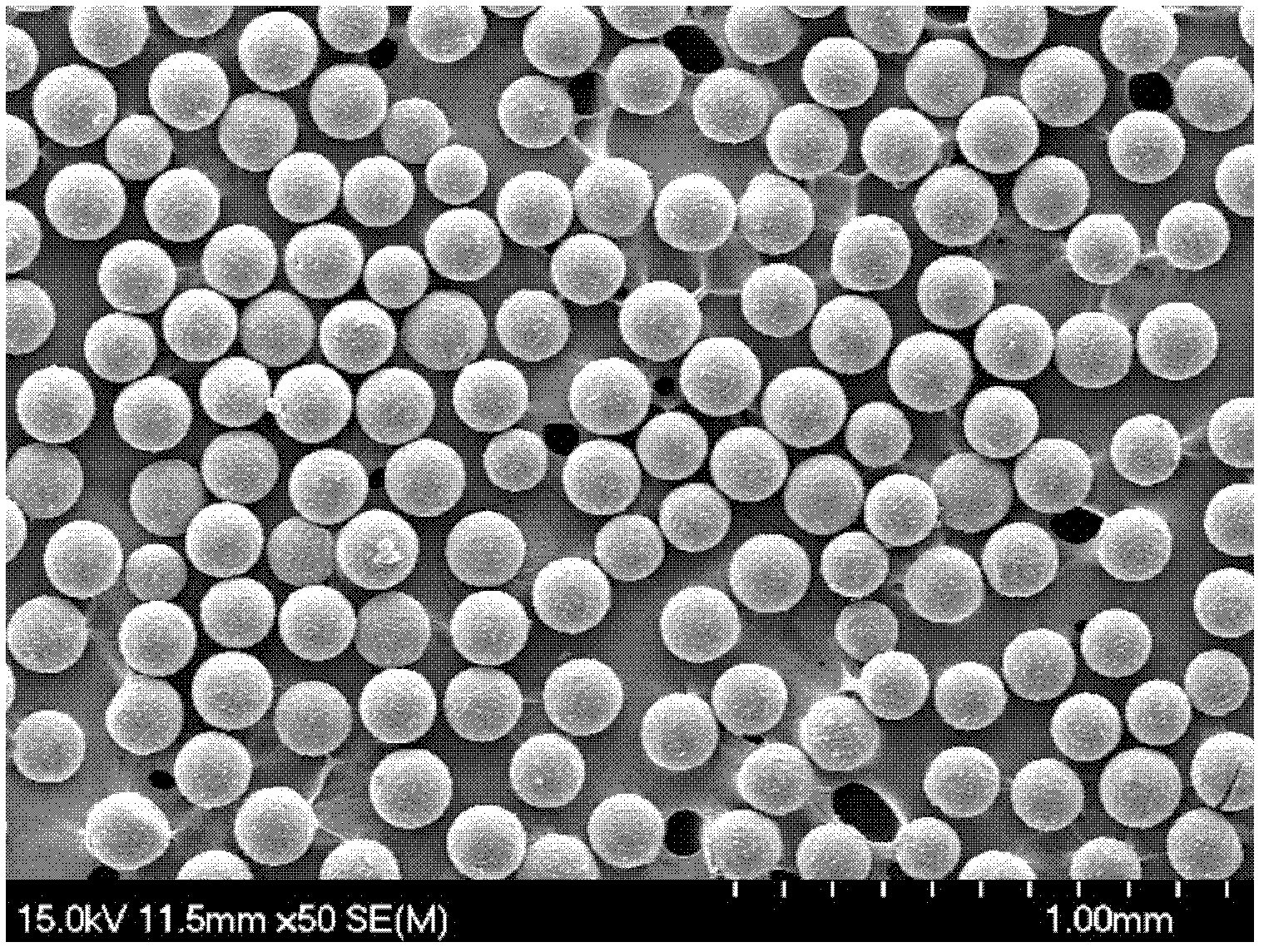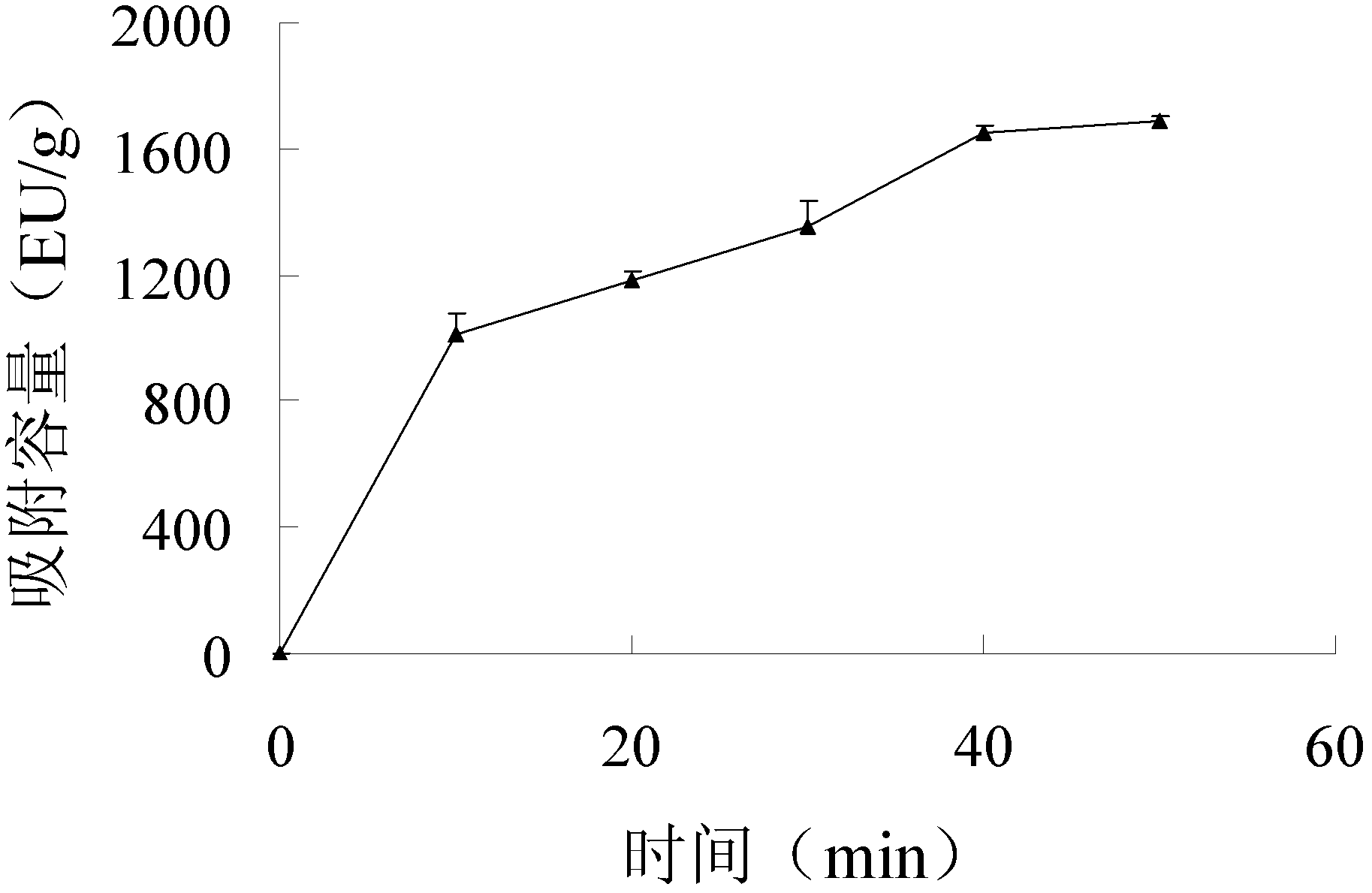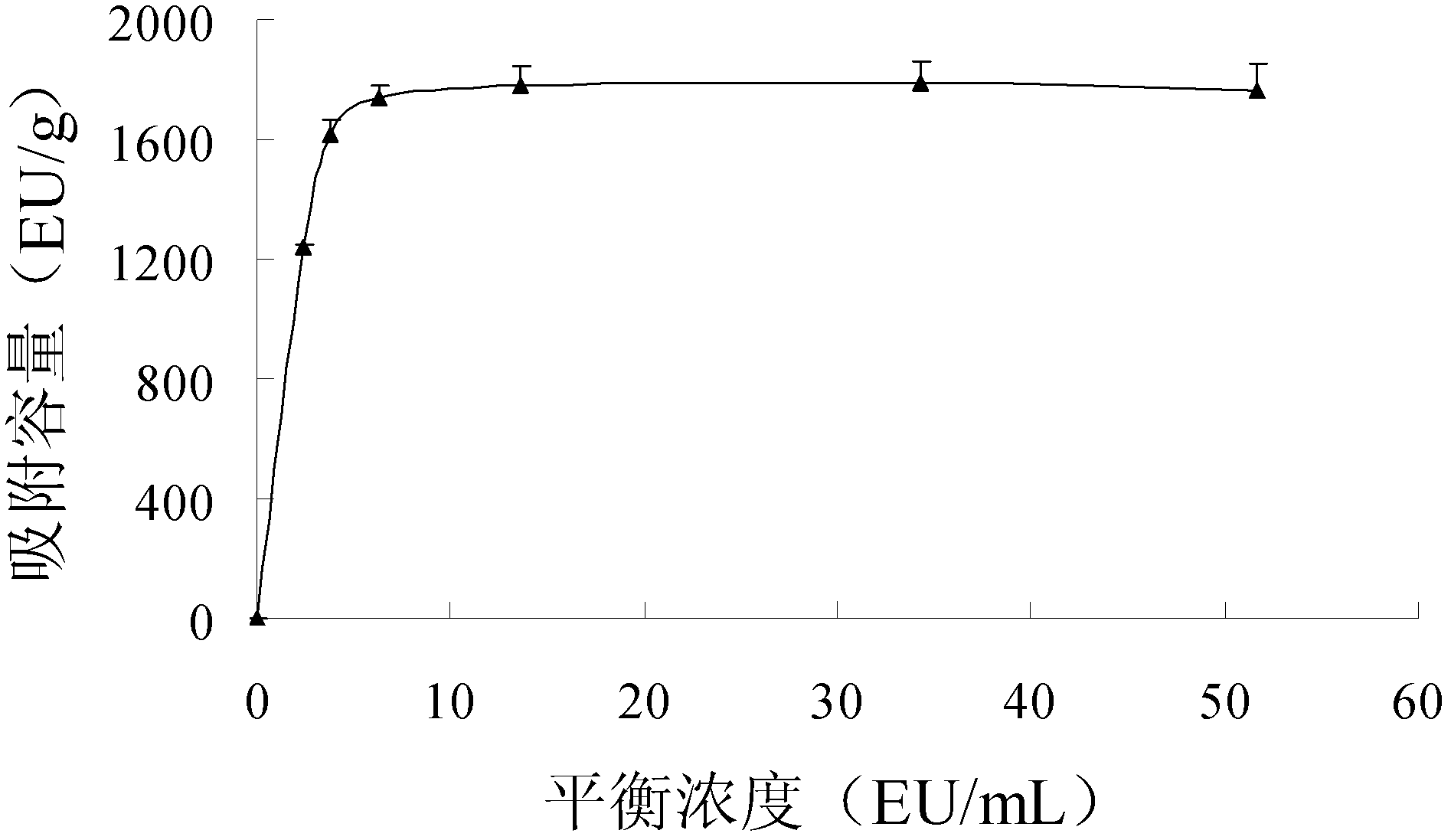Magnetic anion exchanger and application of magnetic anion exchanger as endotoxin adsorption medium
An anion exchanger and endotoxin technology, applied in the field of biomedical materials, can solve the problems of limited processing capacity, cumbersome operation, decreased yield, etc., and achieve the effect of high removal rate and high retention rate
- Summary
- Abstract
- Description
- Claims
- Application Information
AI Technical Summary
Problems solved by technology
Method used
Image
Examples
Embodiment 1
[0020] Embodiment 1: the preparation of magnetic anion exchanger
[0021] (1) Ultrasonic dispersion of 1.5g ferroferric oxide in 100mL of 2% acetic acid solution by volume fraction, adding 3.0g chitosan (produced by Aoxing Company, molecular weight 300,000, deacetylation degree 95%, i.e. amino density is 5833μmol / g) to make it completely dissolved and then dispersed into 100mL of liquid paraffin containing 1.0mL Span 80, mechanically stirred for 30min, then added dropwise 6.0mL of 40% formaldehyde solution, reacted at 40°C for 2h, added 50mL of petroleum ether, and stood to separate layer, pour out the upper oil phase, add 100mL of distilled water containing 1.0mL Tween 80, stir and adjust the pH to 13 with 10% NaOH solution, while raising the temperature to 70°C, add 4.0mL of epichlorohydrin after reacting for 2h , continue to stir the reaction for 3h, and the product is washed with ethanol and distilled water and dried in vacuum.
[0022] (2) Soak 1.0 g of microspheres obta...
Embodiment 2
[0026] Example 2: Application of Magnetic Anion Exchanger in Adsorbing Endotoxin in Acidic Protein
[0027] Take 25 mg of magnetic anion exchanger, wash with 1% sodium deoxycholate solution and filter three times, then wash three times with pyrogen-free water, dry and disperse into 2.0 ml solution containing 2.0 mg bovine serum albumin (BSA) and 18 EU endotoxin , shake and adsorb for 60 min, absorb the adsorption medium with a magnet, take out the supernatant to determine the protein and endotoxin content.
[0028] The anion exchanger DEAE-Sepharose was used as the adsorption medium, and the adsorption conditions were the same as above, as a comparative experiment.
Embodiment 3
[0029] Example 3: Application of Magnetic Anion Exchanger in Adsorbing Endotoxin in Basic Protein
[0030] Take 25 mg of magnetic anion exchanger, wash with 1% sodium deoxycholate solution and filter three times, then wash three times with pyrogen-free water, dry and disperse into 2.0 ml of a solution containing 1.0 mg of lysozyme (LYZ) and 23 EU of endotoxin, shake Adsorb for 60 minutes, absorb the adsorption medium with a magnet, take out the supernatant to measure the protein and endotoxin content.
[0031] The anion exchanger DEAE-Sepharose was used as the adsorption medium, and the adsorption conditions were the same as above, as a comparative experiment.
[0032] Coomassie Brilliant Blue method was used for the detection of protein content, and the chromogenic matrix method of Limulus reagent was used for the determination of endotoxin content. Figure 4shown. As can be seen from the figure, whether it is an acidic protein BSA solution or a basic protein LYZ solution, ...
PUM
 Login to view more
Login to view more Abstract
Description
Claims
Application Information
 Login to view more
Login to view more - R&D Engineer
- R&D Manager
- IP Professional
- Industry Leading Data Capabilities
- Powerful AI technology
- Patent DNA Extraction
Browse by: Latest US Patents, China's latest patents, Technical Efficacy Thesaurus, Application Domain, Technology Topic.
© 2024 PatSnap. All rights reserved.Legal|Privacy policy|Modern Slavery Act Transparency Statement|Sitemap



